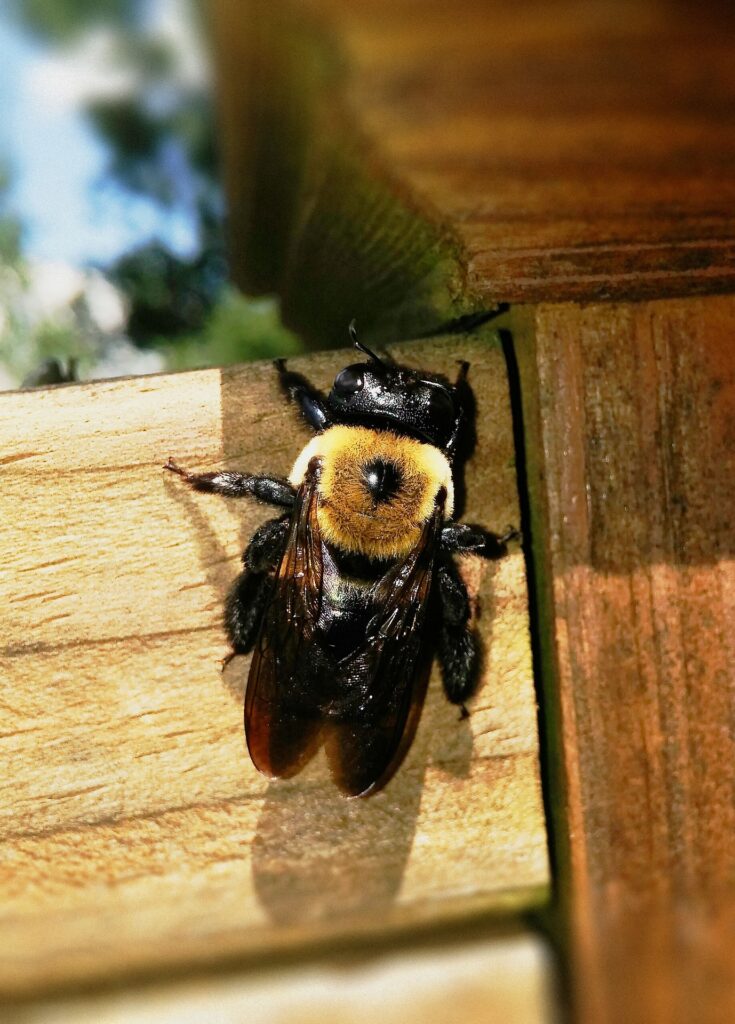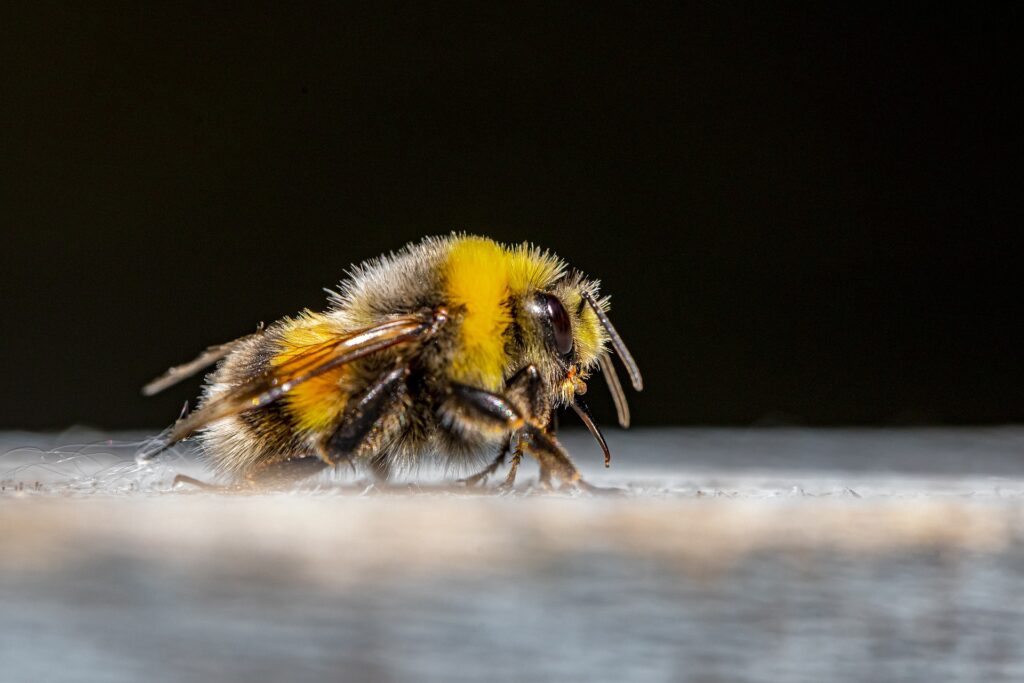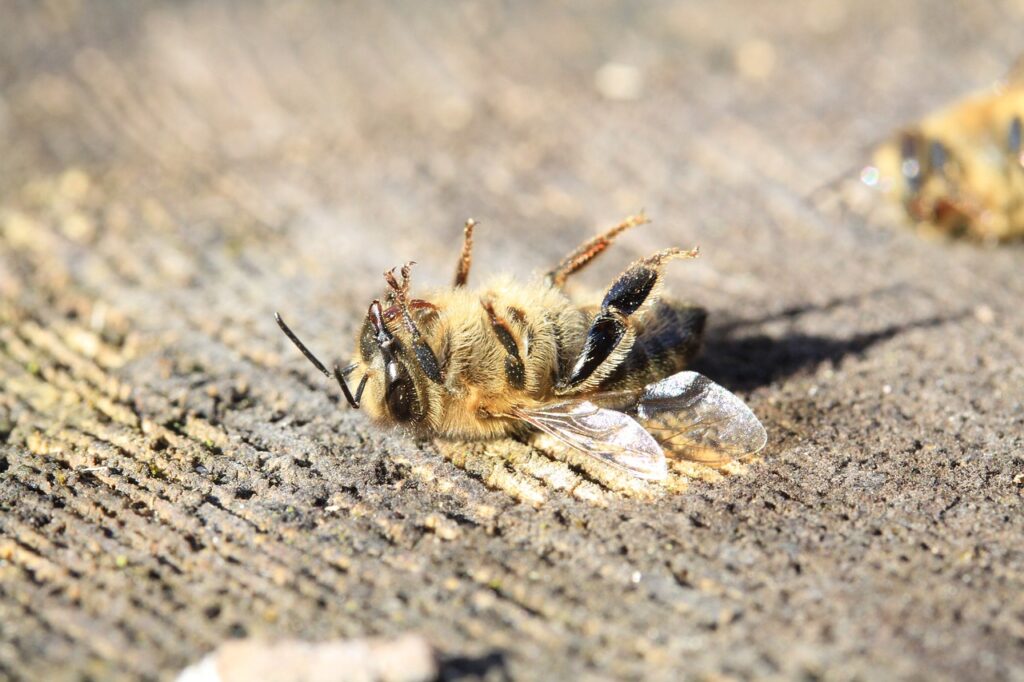Seeking solutions to the bee problem in your basement? To assist you in safely removing bees and avoiding further infestations, this article covers both DIY techniques and professional bee removal services. We’ll also give you advice on what to do if you see dead bees in basement. Discover how to find the hive, smoke it, take it out, block entry points, use insecticides, trap and relocate it, and extract it. Use these suggestions to keep both your family and the bees safe.
Bees frequently enter basements to build nests there. Although they are crucial pollinators, bees can be dangerous to you and your family if they decide to live in your basement. In the event that you discover bees in basement, you must act right away.
1. Understanding Bees in Basements
Why bees enter basements
Bees enter basements for several reasons, including seeking shelter, looking for a place to build a hive, or being attracted to a food source. If there are gaps or holes in your basement walls, bees can easily make their way in.
Types of bees found in basements



The most common types of bees found in basements are honey bees, bumblebees, and carpenter bees. Honey bees are usually found in larger numbers and can build large hives. Bumblebees are solitary and build small nests. Carpenter bees create nests in wood.
2. Signs of Bees in Basements
Visual signs
The most obvious sign that bees are in your basement is visual. There probably is a hive nearby if you see bees flying around in your basement or close to the entrance. Be on the lookout for bee swarms, which may point to a hive or nest. Near the hive, you might also spot honeycomb or honeycomb debris, which can take the form of a waxy hexagonal structure. Dead bees may also indicate an infestation if you see them.
Auditory signs
Bees in your basement can also be detected by auditory cues. When bees fly and communicate with one another, they buzz. A hive is probably nearby if you hear a buzzing noise coming from your basement. Before assuming that the sound is coming from bees, it’s important to keep in mind that other insects, like flies or wasps, can also make a buzzing sound.
Smell signs
The presence of bees in your basement may also be indicated by smell signs. When bees are in large groups, their odor is potent and sweet. A bee hive could be nearby if you detect a potent, sweet odor in your basement. Before assuming that bees are the source of the smell, it’s important to keep in mind that other things, like a dead animal or mold growth, can also leave your basement with a strong odor.
It’s crucial to hire a specialist to safely and successfully remove the bees from your basement if you see any of these symptoms. It can be dangerous and possibly harmful to try to get rid of the bees on your own, which could harm the bees, an essential pollinator in our ecosystem. An expert pest controller or beekeeper will have the tools and knowledge needed to safely remove the bees and relocate them to a more suitable location.
3. How to Get Rid of Bees in Basement
DIY methods
If you have a small bee infestation in your basement, it’s possible to get rid of them yourself using some DIY methods. However, it’s important to note that bees can be dangerous and can sting if provoked, so it’s crucial to take precautions and be aware of the risks involved.
Here are some steps you can follow to get rid of bees in your basement:
- Locate the hive: The first step is to find the source of the bees and try to locate the hive. Bees usually build their hives in secluded areas, so it might take some time to find it. Look for places where bees are entering and exiting, such as cracks or gaps in the walls, or holes in the floor.
- Smoke the hive: Once you’ve located the hive, use a smoker to calm the bees down and make them less aggressive. A smoker is a tool that produces smoke, which interferes with the bees’ communication system, making them less aggressive and more docile. You can purchase a smoker at your local hardware store.
- Remove the hive: After smoking the hive, it’s time to remove it. Use a vacuum to suck up the bees and the hive. Make sure to wear protective clothing, such as a beekeeper’s suit or long sleeves and pants, to avoid getting stung. Place the hive in a bag and seal it tightly to prevent any bees from escaping.
- Block the entry points: To prevent bees from entering your basement in the future, seal any holes or gaps in the walls or floors. Use caulk or foam insulation to seal the gaps, and make sure to inspect your basement regularly to check for any new entry points.
It’s important to note that while these methods can be effective for small bee infestations, larger infestations should be left to professional bee removal services. Additionally, if you are allergic to bee stings or have a fear of bees, it’s best to avoid attempting to remove them yourself and instead contact a professional.
Professional methods
If you have a large bee infestation in your basement or don’t feel comfortable handling the bees yourself, it’s best to call a professional bee removal service. They have the necessary equipment and expertise to safely remove the bees and the hive without causing harm to the bees or you.
Here are some professional methods that a bee removal service may use to remove bees from your basement:
- Insecticides: One method that bee removal services may use to get rid of bees is to use insecticides. Insecticides can kill the bees and the hive, but they need to be used with caution to avoid any harm to you or your family. A professional bee removal service will know how to use insecticides safely and effectively.
- Trap and relocate: Another method that bee removal services may use is to trap the bees and relocate them to a more suitable location. Traps are set up near the hive, and once the bees are trapped, they are relocated to a safe place, such as a nearby field or forest. This method is more humane than using insecticides, and it allows the bees to continue their important role as pollinators.
- Extraction: For larger infestations or if the hive is located in a difficult-to-reach area, a bee removal service may need to cut open the wall and extract the hive. This method is more invasive than the other methods and may result in some damage to your property. However, it’s sometimes necessary to completely remove the hive to prevent future infestations.
It’s important to note that professional bee removal services have the necessary permits and certifications to handle bees safely and legally. Attempting to remove bees yourself can be dangerous and may result in harm to yourself, others, or the bees.
4. How to Prevent Bees in Basement
The best way to prevent bees from entering your basement is to seal any entry points. Here are some tips to prevent bees from entering your basement:
Sealing entry points
- Check for holes or gaps in your basement walls and seal them.
- Install screens on windows and doors to prevent bees from flying in.
- Use caulking or foam insulation to seal gaps around pipes or wiring.
Regular maintenance
- Keep your basement clean and free of food sources that may attract bees.
- Regularly inspect your basement for signs of bees or other pests.
- Trim trees and bushes near your home to prevent bees from building nests.
5. Dead Bees in Basement: What to Do

If you notice dead bees in your basement, it could be a sign of a larger problem. Here are some steps to take:
Cleaning up dead bees
If you notice dead bees in your basement, it’s important to determine the possible cause and take action to prevent it from happening again. Here are some steps to take:
First and foremost, it’s important to wear gloves and a mask when cleaning up dead bees. This is to avoid being stung or inhaling any harmful substances.
The next step is to use a vacuum to clean up the dead bees. Be sure to dispose of the bees in a sealed bag to prevent any spread of disease or further infestation.
Once the dead bees have been removed, it’s important to determine the possible cause of their death.
Possible causes of dead bees
There are several factors that could contribute to bees dying in your basement:
One possible cause is the use of insecticides. If you recently used insecticides to get rid of the bees, it’s possible that some of them died as a result. Insecticides can be harmful to bees and can kill them even if they are not the intended target.
Another possible cause is a lack of food sources. Bees require food to survive, so if there is a lack of food sources in your basement, they may die. This could be due to a lack of flowers or plants nearby or a lack of access to honey or sugar water.
Lastly, bees can contract diseases that can kill them. If you suspect that disease may be the cause of the dead bees, it’s best to contact a professional to assess the situation and provide treatment if necessary.
In conclusion, finding dead bees in your basement can be a sign of a larger problem. It’s important to clean up the bees and determine the possible cause of their death in order to prevent it from happening again. In some cases, it may be necessary to contact a professional to address the issue.
FAQs
There are several ways to prevent bees from entering your basement. First, seal any cracks or gaps in the walls or foundation. You can also install screens on windows and doors to prevent bees from flying in. Keep your basement clean and free of food sources to discourage bees from nesting.
It’s important to avoid disturbing the nest, as this can cause the bees to become agitated and attack. Contact a professional bee removal service to safely remove the nest and any bees.
Yes, bees can cause damage to your basement by creating nests and tunnels in the walls or foundation. This can weaken the structure of your home and lead to costly repairs.
One option is to use a vacuum to safely remove bees from your basement. You can also use natural repellents such as peppermint oil or vinegar to discourage bees from nesting.
No, not all bees are harmful to humans. While some bees can sting, many species are important pollinators and play a crucial role in our ecosystem. It’s important to educate yourself on the different types of bees and how to coexist with them safely.
If you find bees in your basement, it’s important to take action to remove them safely. Bees are important pollinators, and killing them should be a last resort. Contact a local beekeeper or a pest control professional who has experience with bee removal. They will be able to safely remove the bees from your basement and relocate them to a more suitable location.
Killing bees should only be done as a last resort, as they are important pollinators and play a crucial role in our ecosystem. If you must kill bees in your basement, it’s best to contact a pest control professional who has experience in bee removal. They will have the necessary equipment and expertise to remove the bees safely and effectively.
Carpenter bees are attracted to untreated wood, which is often found in basements. If you have untreated wood in your basement, such as wooden beams or unfinished furniture, it may be attracting carpenter bees. Carpenter bees may also be attracted to other sources of wood, such as firewood or wooden tools. It’s important to seal any cracks or gaps in your basement and to treat any wooden surfaces with a protective sealant to prevent carpenter bees from nesting in your basement.
To get rid of carpenter bees in your basement, it’s important to identify where they are nesting. Carpenter bees often nest in untreated wood, such as wooden beams or furniture. Once you have identified the location of the nests, seal any cracks or gaps in your basement and treat any wooden surfaces with a protective sealant. If the infestation is severe, it may be necessary to contact a pest control professional who has experience with carpenter bee removal.
If you suspect that you have bees in your basement, there are a few ways to locate them. First, listen for buzzing or humming sounds, which may indicate the presence of bees. Look for any holes or cracks in the walls or ceiling, as bees may be entering your basement through these openings. You can also use a flashlight to inspect any wooden surfaces for signs of bee activity, such as sawdust or holes in the wood. If you are unsure whether you have bees in your basement, it’s best to contact a pest control professional or a local beekeeper for assistance.
6. Conclusion
Bees in your basement can be a nuisance and a danger to you and your family. Understanding the reasons why bees enter basements and knowing how to get rid of them and prevent them from returning is important. Sealing entry points, regular maintenance, and taking action immediately are key to preventing bees from making their home in your basement.
Image Credit @ Pixabay

